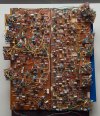AudioSceptic
Major Contributor
That tallies with what I read at the time. Dbx could reach a higher S/N but was known for noise "pumping". Is that what you found?Can you share some sources to those figures? I’m intrigued as even amplifiers then had less S/N ratio than 100dB.
When I was at Abbey Road during 70s we heard about Decca using Dolby with good effect. We were sceptical though. We had tried dbx earlier and was not impressed. Dolby brought two A301s (type A) for us to test.
We then measured the Dolby A on a Studer A80 with EMI tape. We measured 83dB S/N ratio at reference level. We had measured dbx earlier. At 86dB it was quieter.
As a test we chained two device groups without a recorder in between. We couldn’t hear the Dolby unit working but the effect of dbx was easy to hear. We standardised the machine room on Dolby units.
We, above were the engineers and some of the managers of the studio.

